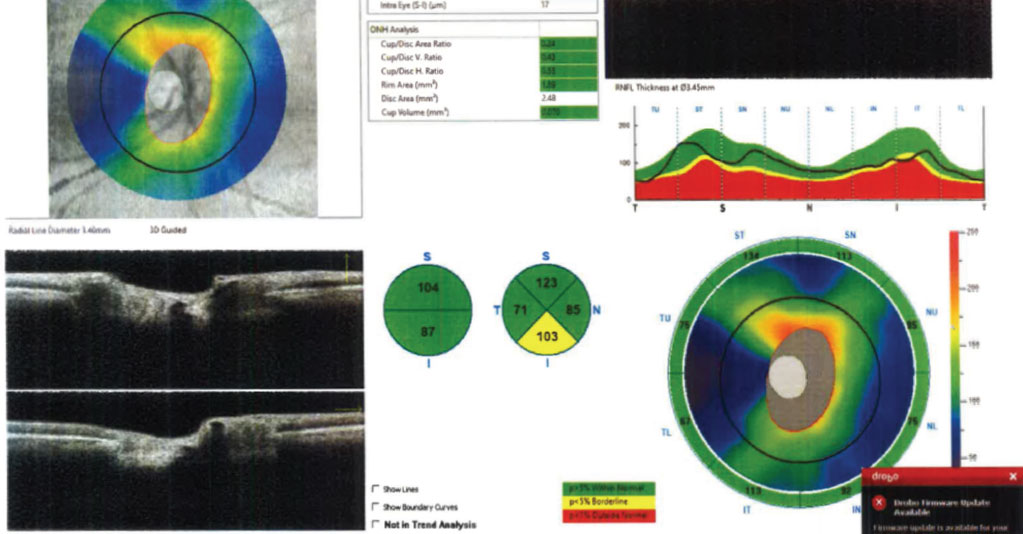 |
Patients with POAG or normal tension glaucoma report similar vision-related quality of life. Photo: Julia Reimold, OD, and Chris Wroten, OD. Click image to enlarge. |
Recognizing the importance of preserving vision-related quality of life (VRQOL) among glaucoma patients, researchers recently initiated an analysis to better understand how it differs between normal tension glaucoma (NTG) and primary open-angle glaucoma (POAG). While they found VRQOL tended to be worse in POAG cases, the difference between the two groups was not significant.
The study authors analyzed data from the prospective, observational LIGHT study, which included clinical, demographic and socioeconomic information from 506 patients with NTG and 287 with POAG who completed the self-reported National Eye Institute Visual Function Questionnaire. To control for various confounding factors that could impact VRQOL, propensity score matching was used.
When compared to patients with POAG, the researchers found that individuals with NTG were more likely to be female as well as have better integrated binocular visual field mean deviation values and visual acuity in the worse eye. Additionally, they had fewer comorbid ophthalmic diseases, used less topical glaucoma medications and were followed up for a shorter time period.
While the researchers observed that patients with POAG tended to have worse quality of life than their NTG counterparts, they reported no statistically significant differences between the groups in ocular pain, near and distance activities, mental health, role difficulties, ability to drive and overall composite score. However, they noted that social functioning and dependency were significantly worse among patients with POAG. These findings can offer insight to optometrists when determining how best to support glaucoma patients.
“Although we found little difference in overall VRQOL between patients with NTG and those with POAG after controlling for confounding factors, patients with POAG tended to have poorer VRQOL, especially in terms of social functioning and dependency, than their counterparts with NTG,” the study authors concluded. “Confirmation of our present findings in a large-scale study will help improve treatment planning, counseling and visual rehabilitation of patients with glaucoma.”
Chun YS, Sung KR, Park CK, et al. Comparison of vision-related quality of life between normal tension glaucoma and primary open angle glaucoma. J Glaucoma. March 1, 2022. [Epub ahead of print]. |

